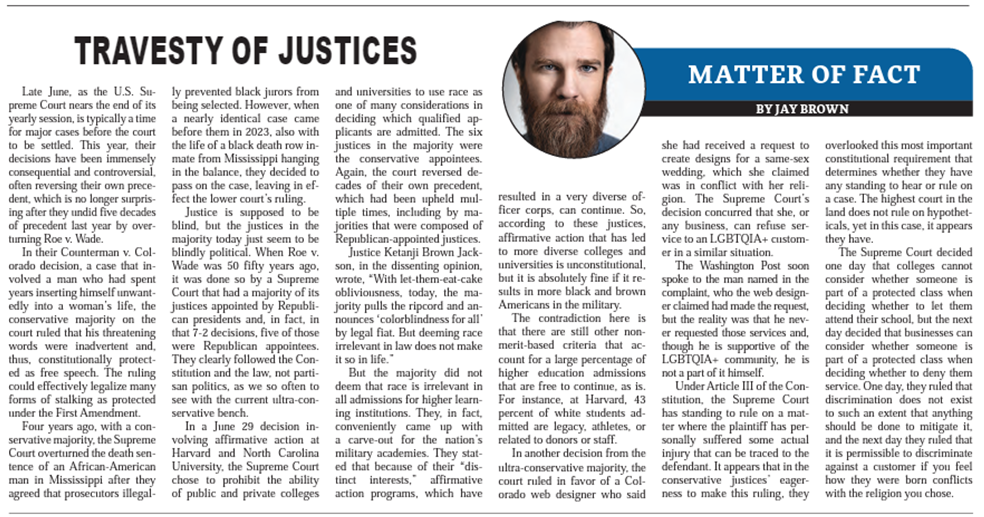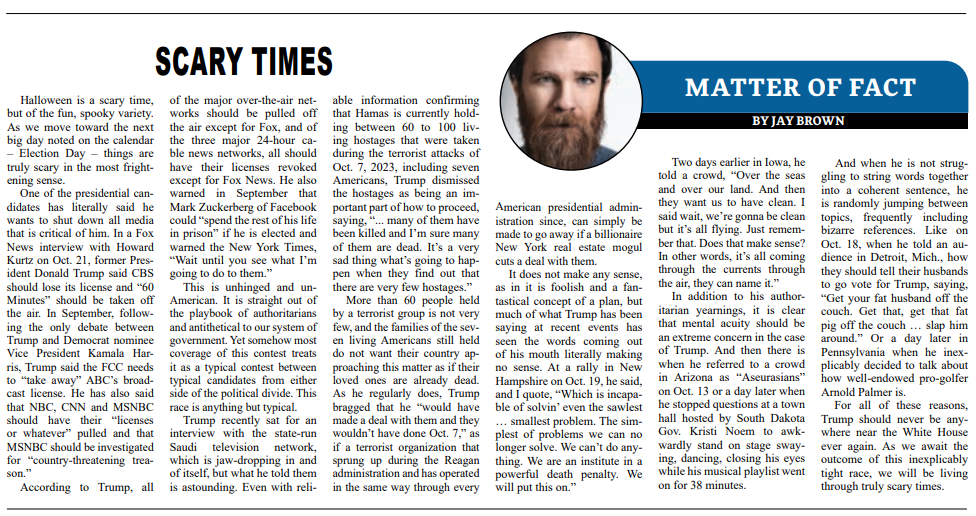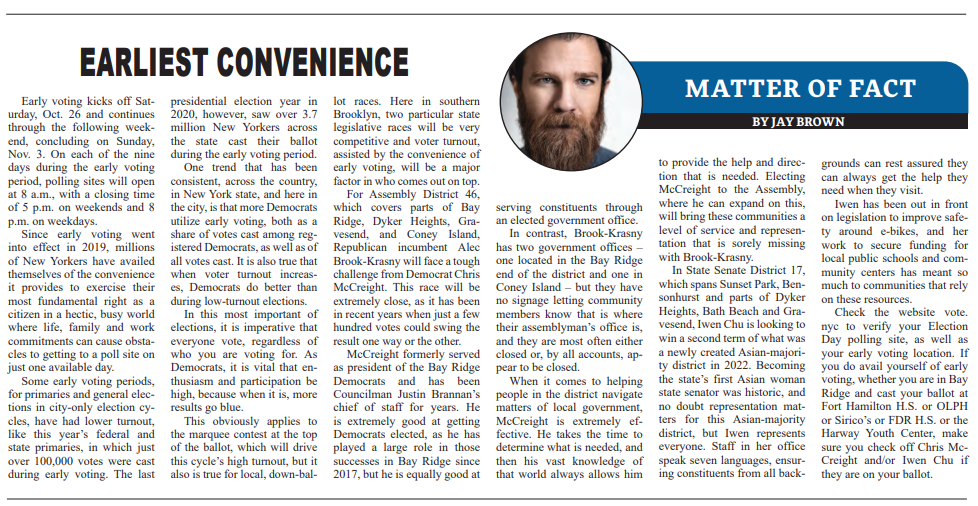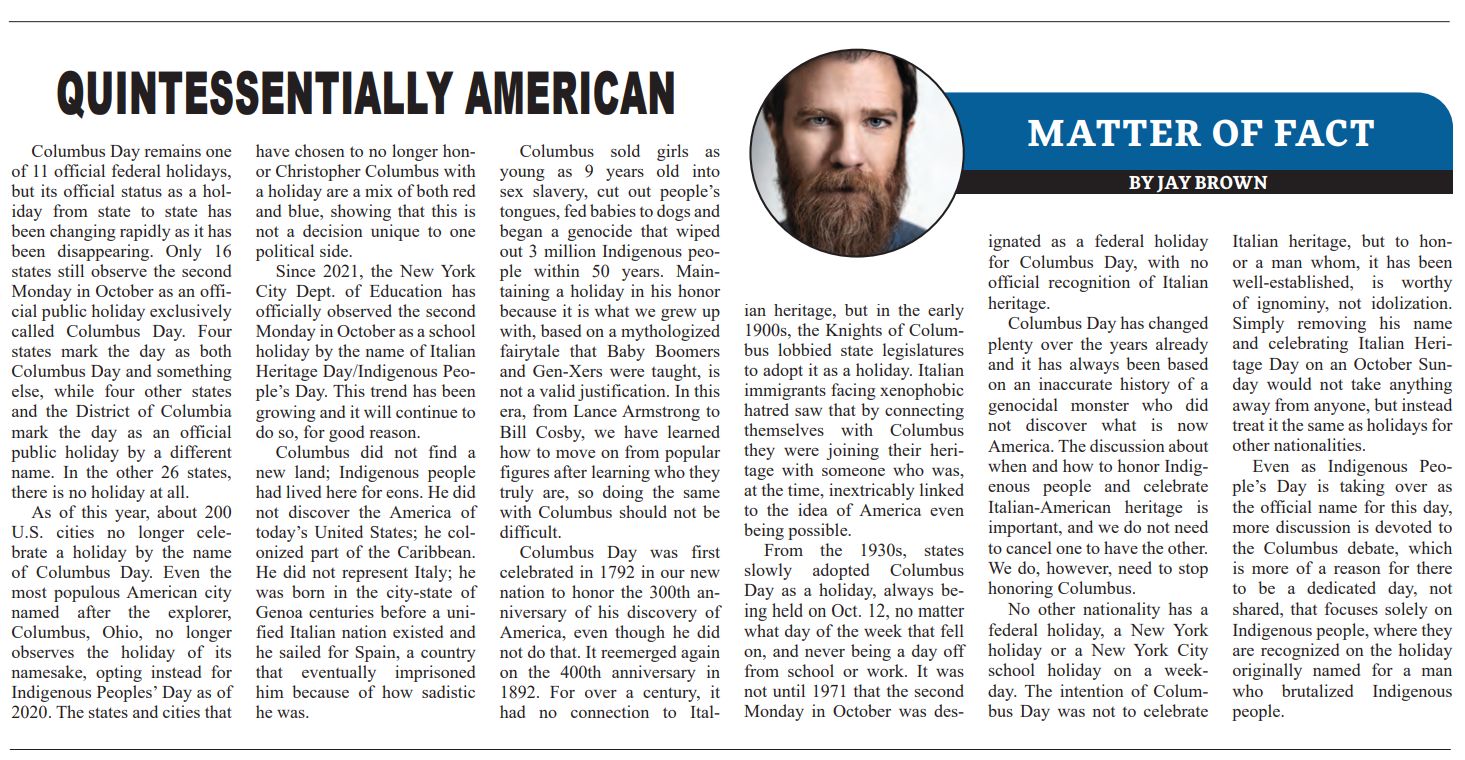This column, from the weekly opinion piece MATTER OF FACT, first appeared on BrooklynReporter.com, the Home Reporter and Spectator dated July 14, 2023
Late June, as the United States Supreme Court nears the end of its yearly session, is typically a time for major cases before the court to be settled. This year, their decisions have been immensely consequential and controversial, often reversing their own precedent, which is no longer surprising after they undid five decades of precedent last year by overturning Roe v. Wade.
In their Counterman v. Colorado decision, a case that involved a man who had spent years inserting himself unwantedly into a woman’s life, the conservative majority on the court ruled that his threatening words were inadvertent and, thus, constitutionally protected as free speech. The ruling could effectively legalize many forms of stalking as protected under the first amendment.
Four years ago, with a conservative majority, the Supreme Court overturned the death sentence of an African American man in Mississippi after they agreed that prosecutors illegally prevented black jurors from being selected. However, when a nearly identical case came before them in 2023, also with the life of a black death row inmate from Mississippi hanging in the balance, they decided to pass on the case, leaving in effect the lower court’s ruling.
Justice is supposed to be blind, but the justices in the majority today just seem to be blindly political. When Roe v. Wade was decided fifty years ago, it was done so by a Supreme Court that had a majority of its justices appointed by Republican presidents and, in fact, in that 7-2 decision, five of those were Republican appointees. They clearly followed the Constitution and the law, not partisan politics, as we so often to see with the current ultra-conservative bench.
“…deeming race irrelevant in law does not make it so in life.”
Justice Ketanji Brown Jackson in the dissenting opinion to the Supreme Court decision ending race being used as a consideration for higher education admissions
In a June 29 decision involving affirmative action at Harvard and North Carolina University, the Supreme Court chose to prohibit the ability of public and private colleges and universities to use race as one of many considerations in deciding which qualified applicants are admitted. The six justices in the majority were the conservative appointees. Again, the court reversed decades of their own precedent, which had upheld multiple time, including by majorities that were comprised of Republican-appointed justices.
Justice Ketanji Brown Jackson, in the dissenting opinion, wrote, “With let-them-eat-cake obliviousness, today, the majority pulls the ripcord and announces ‘colorblindness for all’ by legal fiat. But deeming race irrelevant in law does not make it so in life.”
But the majority did not deem that race is irrelevant in all admissions for higher learning institutions. They, in fact, conveniently came up with a carve out for the nation’s military academies. They stated that because of their “distinct interests,” affirmative action programs, which have resulted in a very diverse officer corps, can continue. So, according to these justices, affirmative action that has led to more diverse colleges and universities in unconstitutional, but it is absolutely fine if it results in more black and brown Americans in the military.
The contradiction here is that there are still other non-merit-based criteria that account for a large percentage of higher education admissions that are free to continue, as is. For instance, at Harvard, 43% of white students admitted are legacy, athletes, or related to donors or staff.
In another decision from the ultra-conservative majority, the court ruled in favor of a Colorado web designer who said she had received a request to create designs for a same-sex wedding, which she claimed was in conflict with her religion. The Supreme Court’s decision concurred that she, nor any business, can refuse service to an LGBTQIA+ customer in a similar situation.
The Washington Post soon spoke to the man named in the complaint, who the web designer claimed had made the request, but the reality was that he never requested those services and though he is supportive of the LGBTQIA+ community, he is not a part of it, himself.
Under article III of the Constitution, the Supreme Court has standing to rule on a matter where the plaintiff has personally suffered some actual injury that can be traced to the defendant. It appears that in the conservative justice’s eagerness to make this ruling, they overlooked this most important, constitutional requirement that determines whether they have any standing to hear or rule on a case. The highest court in the land does not rule on hypotheticals, yet in this case, it appears they have.
The Supreme Court decided one day that colleges cannot consider whether someone is part of a protected class when deciding whether to let them attend their school, but the next day decided that businesses can consider whether someone is part of a protected class when deciding whether to deny them service. One day, they ruled that discrimination does not exist to such an extent that anything should be done to mitigate it, and the next day ruled that it is permissible to discriminate against a customer if you feel how they were born conflicts with the religion you chose.




